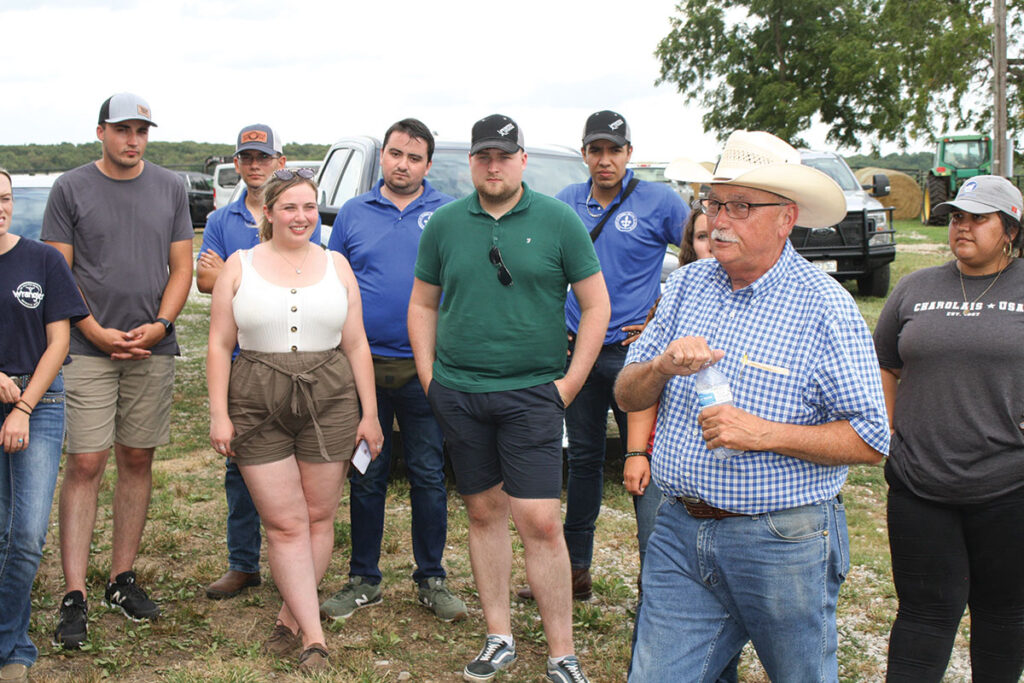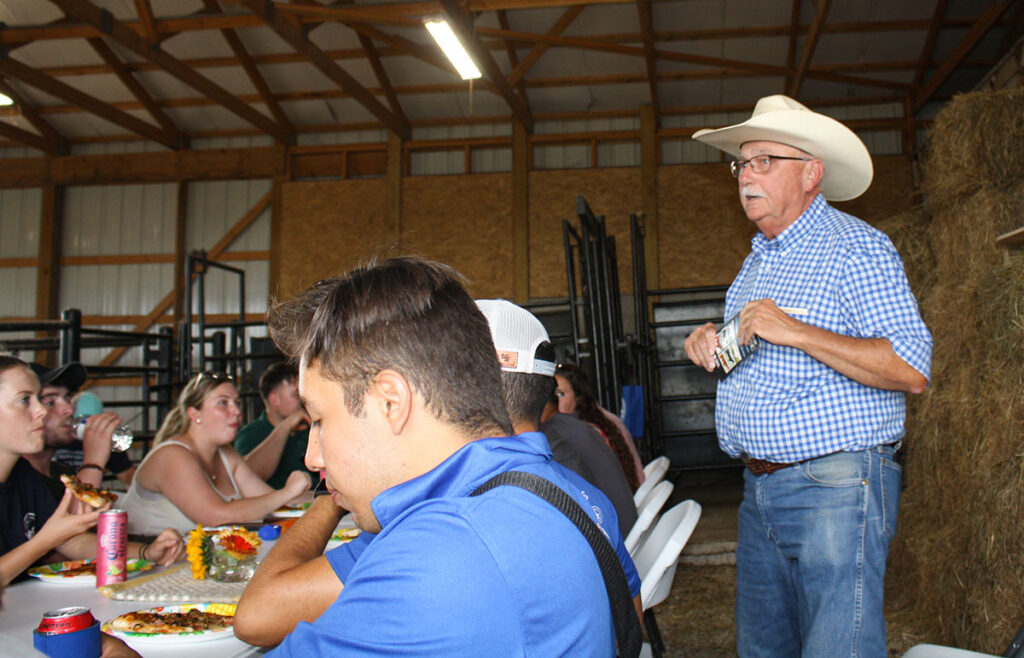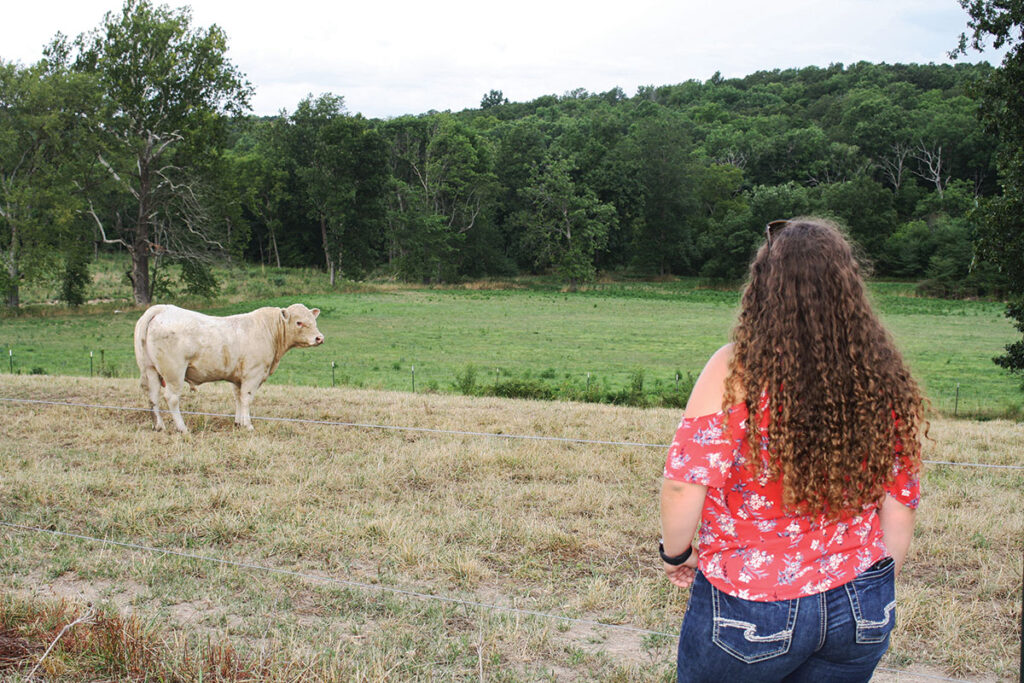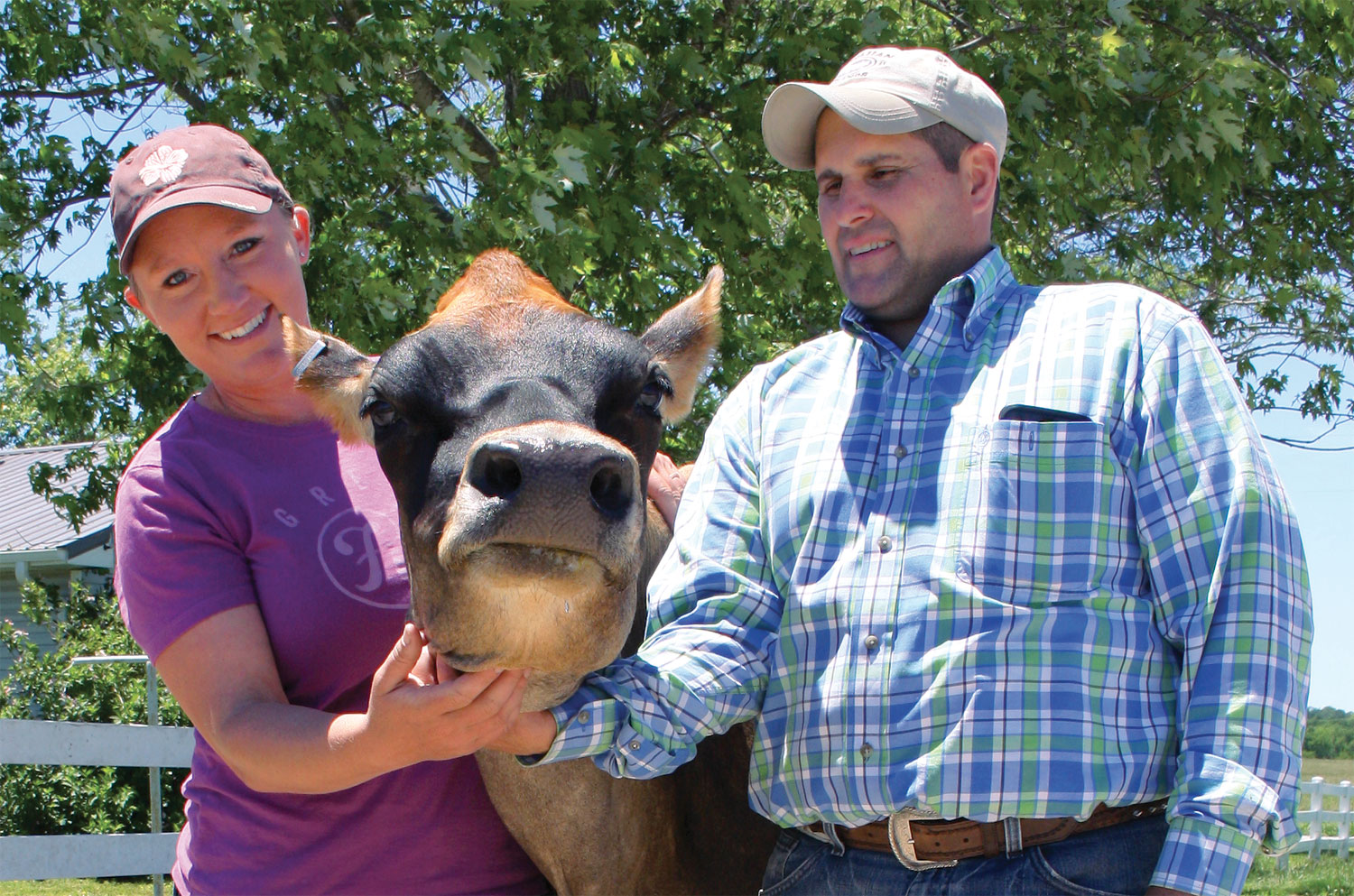
Young cattle producers from five countries converge on the Ozarks
MARSHFIELD, MO. – Cattle producers representing five countries recently toured farms and cattle-related businesses in the Ozarks as part of the Charolais Charbray International Youth Program (CCIYP). The 2022 event was the first time the tour was held in the United States and was highlighted by stops in Kansas and Missouri Ozarks.
Stops in the Ozarks included the Ozark Empire Fair, Missouri Prime, Springfield Livestock Marketing Center, Darr Agriculture Center on the campus of Missouri State University, Bradley Cattle Company, Aschermann Charolais and Akaushi, Show Me Genetic Services and Shaffer Cattle Company. Stops allowed participants to explore genetics, herd health, forage production, plant breeding, beef production and processing, marketing and nutrition.
David Hobbs, vice president of operation for the American International Charolais Association, served as a guide to the budding cattle producers.
“Everything has been positive,” he said of the tour. “They have gained a better understanding of what we’re doing here in the U.S. What we’re trying to do is make their cattle better and make our cattle better. But, they need to learn what we’re about, and we need to learn what they are about.”
The idea for an international youth tour began four years ago during the adult World Charolais Conference in Mexico in an effort to allow young producers to explore agriculture around the world.
“Here in the states, our junior programs are typically 8 to 18, but most international breeding societies are 18 to 21 or 25. Each youth was selected to represent their society and had to compete to be here,” David said.
Each country’s breed association or society may select two representatives to attend. This year’s tour welcomed producers from Mexico, Australia, Ireland, Scotland and England. The annual tour aims to promote U.S. livestock genetics worldwide and is partially financed by the United States Livestock Genetic Export, a nonprofit, nationwide trade association funded by the Foreign Agricultural Service.

“These young people are the future leaders of the Charolais business in their respective countries,” David said. “One of the issues we fight, not only as Charolais breeders but all breeders, is exporting; the world wants and needs our genetics. We’re trying to open up markets for Charolais and other cattle genetics, as well as other livestock species.”
David added the tour allows young producers to see how their cattle herds differ from those in the U.S.
“They are excited about it and are seeing things they like,” David continued. “I hope down the road that they are the future of the breed in their countries and come back and get our genetics.”
Western Australian cattle producer Amanda Cavanagh, who raises both Charolais and Shorthorn, said she gained a great deal of information about the American livestock industry.
“This has been awesome,” she said, adding that she had to write an essay to the Australian Charolais Society to be considered for the tour. “I was surprised about the climate here, how green it is, and the amount of grass. It’s dry here, but it’s nothing compared to what we have to deal with at home. I think our temperatures are pretty close in the summer, but we don’t have the humidity. After looking at the cattle, I think America and Australia have very similar cattle.
“A lot of the Australian genetics came from Canada, so they are all pretty close; they have the same sort of frame scores and size. I think we have cattle that have a little more volume than what I’ve seen here. Seeing the pictures of the cattle from other countries, I can see a big difference, especially those from Ireland and Scotland. I can’t wait to go home and share what I learned here with the others and maybe come back another time.”

In addition to being a cattle producer, Amanda also works at a stockyard in Australia, so the stop at the Springfield Livestock Marketing Center was of particular interest.
“It’s definitely different,” she said with a laugh. “In Australia, we sell pens; we don’t have ring sales. I was really surprised by that.”
Bruce Bradley, owner of Bradley Cattle Company near Marshfield, Mo., was thrilled to have had the opportunity to spend time with the group and share information about his operation.
“It’s great to hear how they do their business and share how I do mine,” he said. “I think this is great for education. We know our targets here, and they have a different target than we do, but it’s interesting to hear those targets. But, it all comes down to the same thing — selling cattle.”
He added that he enjoyed engaging with the young people and communicating about the cattle industry in the Ozarks and in the U.S.
“With these kids, you have a future in the cattle business. These young people are a great future for their industry and their country,” he said. “We have so many great young people here, and we need to broaden our horizons by listening to these young people from other countries. It refreshes my soul that these kids will be in the beef cattle industry.”







